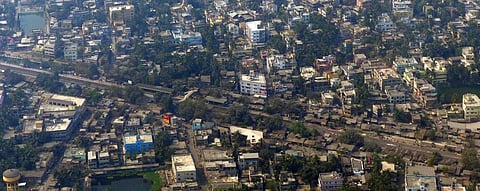

Testing for the novel coronavirus disease (COVID-19) has become a highly contentious issue in West Bengal. Health experts allege fewer tests have led to the current critical situation in the state, with 49,321 cases and 1,221 deaths from the disease till July 22, 2020 evening.
Capital Kolkata is the most affected in the state, with nearly 30 per cent of total cases and 60 per cent of all deaths.
Concerns over testing in the state forced a lengthy mention in a July 21 online address by Chief Minister Mamata Banerjee.
Every year, the ruling Trinamool Congress organises a public meeting in Kolkata in memory of those killed in police firing on this day in 1993 during a protest rally.
Banerjee usually outlines the future political direction for the party during this meet. This time, however, Banerjee cancelled the meet and chose to address her supporters virtually.
As calls for more testing grow in the state, a senior Trinamool leader and advisor on COVID-19 control, alleged some private laboratories gave false positives to increase the number of cases and, thus earn more money.
Banerjee promises more tests
“We are conducting around 13,000 tests daily now. This number will rise to 25,000 daily by August 15,” said Banerjee in her address. “Remember that in order to improve the COVID-19 situation, we have to improve our testing, tracing and tracking,” she added.
Many feel the chief minister’s assertion is a response to a recent Union government communiqué alleging a poor COVID-19 testing rate in West Bengal.
Banerjee, however, chose to give a different spin to the testing numbers, linking it to the viral spread. “COVID-19 has increased a little, but there is no cause for fear. We are testing more now,” she said.
When the chief minister began her address from her residence, only 7,261 tests per million were conducted in the state, while total testing was at 716,365.
In comparison, Delhi conducted 43,708 tests per million, Tamil Nadu 25,714, Andhra Pradesh 25,269, Karnataka 15,820, Rajasthan 15,555, Kerala 15,397 and Maharashtra 13,154, according to the Union ministry of Health and Family Welfare’s July 21 data.
Only Bihar (3,179 tests), Jharkhand (5,873), Uttar Pradesh (6,487) and Telangana (7,097) lagged behind West Bengal.
Fewer tests are the problem
The West Bengal government recently admitted there were signs of localised community transmission.
Keeping this in mind, the state home secretary July 21 announced a full bi-weekly lockdown in the state beginning July 23. A complete lockdown for a longer duration was subsequently announced July 22 for several parts of the state, particularly within greater Kolkata.
Health experts said lower testing rates were responsible for this increase in the spread of COVID-19 in the state.
“To control the pandemic, the only tried and tested global method is to test, track and treat,” said Manash Gumta, secretary of the Association of Health Service Doctors. “Unless you test more, how can you identify the affected, track their contacts, isolate them and stop the chain of viral proliferation?” he asked.
Gumta claimed the rate of testing was still inadequate and was the main reason for the state gradually becoming a COVID-19 hotbed.
He, however, said it was possible to reach 25,000 tests per day by August 15, as claimed by Banerjee. “It is possible with the infrastructure that we have, but it is crucial to test the right group of people, which is not happening,” he added.
Kunal Sarkar, a senior cardiologist and health expert, also called for increasing the number of tests.
“Look at the number of tests being carried out by Delhi, Maharashtra or Tamil Nadu. They could identify and isolate the affected quickly. The virus spread shows signs of cooling down,” he said.
Santanu Sen, state secretary of Indian Medical Association and a Trinamool member of Parliament, accused the Union government of creating problems for the state from the beginning over testing.
“We have picked up very rapidly, as testing is now conducted in 57 government and private laboratories,” he told Down to Earth.
Laboratory technicians worked round-the-clock and it was impossible to demand extra work from them, countered an official of a frontline government-run health institution in Kolkata.
“It is very difficult unless the government augments the testing facility,” the official said.
The order for a machine that can test around 3,500 samples in a batch — scheduled to come from Germany in August — is all but cancelled, the official pointed out. The manufacturer told the state government the machine could only be delivered in January, the official added.
Parthib Basu, professor of zoology at Calcutta University, however, said there were many reverse transcription polymerase chain reaction (RT-PCR) machines lying around in university departments and institutes.
“They may be used for testing once appropriate bio-safety protocols are in-built,” he said.
Quality also a concern
Quality of testing in private laboratories was a matter of concern, according to Sen. “Sometime back, a private laboratory was found giving false positives and had to be censured,” he said.
“If you can show a person is positive, his or her family members and others will be quarantined and will need to be tested, leading to the growth of your business,” he added.
Many samples from private laboratories were being counter-tested in government-run labs to ascertain the quality of testing, according to him.
A private laboratory was fined Rs 10 lakh for furnishing wrong testing results a while back. “The Indian Council of Medical Research gave accreditation to these labs. It should come clean over such allegations,” said a health expert.